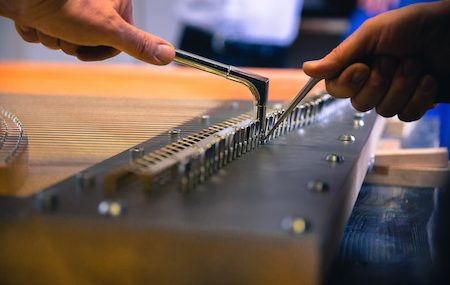As a homeowner, there are a lot of DIY projects you can take on. Want a new color in the bedroom? Grab a can of paint and liven things up.
If you know what you’re doing, you might head out to the garage from time to time and change your car’s oil. It’s a messy process, but some homeowners are mechanically inclined, and have the necessary tools for the job.
So it’s natural to go into “DIY” mode all the time as you face challenges around the home. You have a piano for your kids to learn on. You were told it needs to be tuned from time to time.
How hard can it be? Can’t you learn it from a video online? It would save money.
So you type “can I tune my piano myself” into the search engines and you’re off to your latest DIY project.
Tuning a piano isn’t an easy process, no matter how many videos you watch. The people that tune pianos for a living take years – hundreds of hours of practice – before they are skilled enough to handle any situation.
Most pianos have 88 keys. The number of stings depends on the model, but in most cases, it’s around 230. To create sound from treble and tenor notes, it takes three strings. Bass notes decrease from three strings to two, with the lowest using one string.
That means to control sound from every note isn’t about adjusting one string. It takes adjustment of multiple strings; touching just one can quickly leave the sound wildly out of tune if you don’t do it right.
You can buy a tuning wrench. You can even invest in tuning software to assist in the tuning process. Technology has come a long way, and most tuners rely on a program extensively.
But proper tuning is something only an experienced tuner can do. There are many techniques to get it right, and a good tuner will tell you over and over again: I just know.
If you’ve asked yourself “can I tune my piano myself” – anything is possible. But if you want it done the right way, so that your piano has a rich tonal quality, it’s best to hire the job done.


